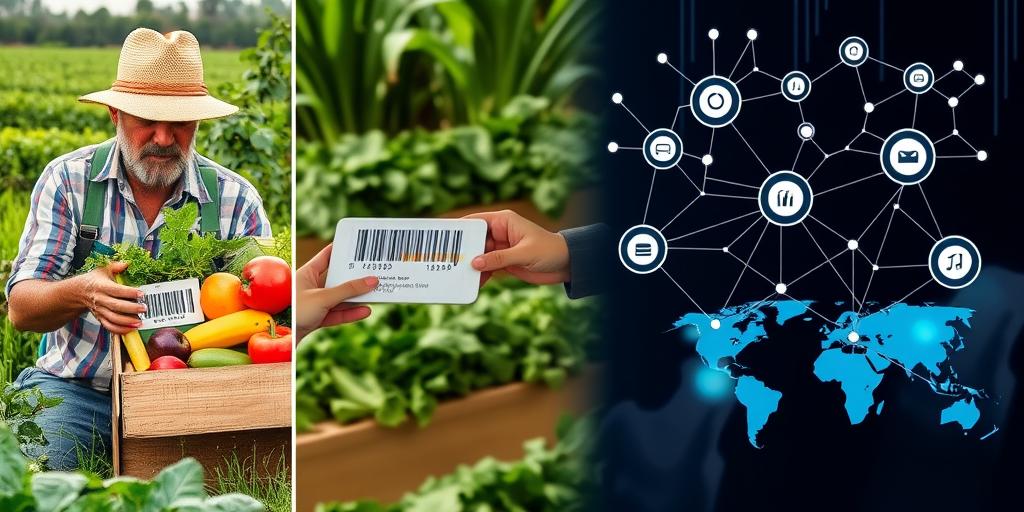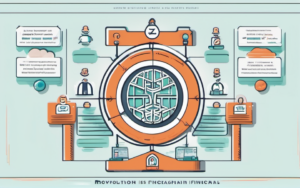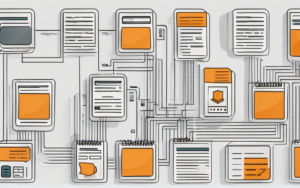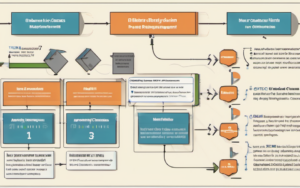The food we consume travels a long and complex journey, from farm to fork. Ensuring the safety and quality of this journey is crucial, and that’s where Blockchain Traceability comes into play. Blockchain technology offers a revolutionary approach to tracking food products, providing unparalleled transparency and security throughout the supply chain.
The Importance of Food Traceability
Food traceability is the ability to track the journey of food products from their origin to the consumer. It’s essential for several reasons:
- Food safety: Traceability allows for rapid identification and recall of contaminated products, preventing outbreaks of foodborne illnesses.
- Product quality: Tracking ingredients and processing methods ensures that products meet quality standards.
- Consumer confidence: Knowing the source and history of their food gives consumers peace of mind.
- Sustainability: Traceability helps identify and address environmental and social issues in the food supply chain.
Challenges in Traditional Food Traceability Systems
Traditional food traceability systems often face limitations:
- Centralized databases: Data is stored in a single location, making it vulnerable to manipulation or corruption.
- Lack of transparency: Information is often siloed, making it difficult to access and share.
- Manual processes: Paper-based systems are inefficient and prone to errors.
- Limited data accuracy: Information can be incomplete or inaccurate, hindering effective tracking.
Blockchain: A Revolutionary Solution
Blockchain technology offers a solution to these challenges. Its decentralized, immutable, and transparent nature provides a robust platform for food traceability.
Blockchain Basics
What is Blockchain?
A blockchain is a distributed, immutable ledger that records transactions in a secure and transparent manner. Imagine it as a shared, public record that can be accessed by anyone but cannot be altered.
Key Features of Blockchain
- Decentralization: Data is distributed across multiple computers, eliminating single points of failure and reducing vulnerability.
- Immutability: Once a transaction is recorded on the blockchain, it cannot be altered or deleted, ensuring data integrity.
- Transparency: All transactions are publicly visible, creating a transparent and auditable record of the food supply chain.
Blockchain Applications in Food Traceability
Tracking Food Products from Farm to Table
Blockchain can track the movement of food products through each stage of the supply chain, from farm to processing, packaging, distribution, and finally to the consumer.
Ensuring Food Safety and Quality
By recording information about ingredients, processing methods, and storage conditions, blockchain can help maintain food safety and quality standards.
Combating Food Fraud
Blockchain provides a tamper-proof record of origin and provenance, making it difficult to adulterate or counterfeit food products.
Improving Supply Chain Efficiency
Blockchain can streamline processes, reduce delays, and improve communication between supply chain participants.
Benefits of Using Blockchain for Food Traceability
Enhanced Transparency and Trust
Blockchain creates a transparent and auditable record of the food supply chain, building trust between producers, suppliers, and consumers.
Improved Food Safety and Quality
By tracking key information, blockchain helps identify potential safety issues and prevent foodborne illnesses.
Reduced Costs and Waste
Blockchain can optimize supply chain operations, reducing costs and minimizing food waste.
Increased Consumer Confidence
Consumers are increasingly demanding transparency and traceability in their food. Blockchain provides this information, boosting consumer confidence.
Implementation and Challenges
Choosing the Right Blockchain Platform
Several blockchain platforms are available, each with unique features and advantages. Choosing the right platform depends on specific needs and requirements.
Data Integration and Standardization
Integrating existing data systems with a blockchain platform can be challenging. Industry-wide data standards are essential for seamless data sharing.
Security and Privacy Concerns
Ensuring data security and protecting sensitive information is crucial. Implementing robust security measures is essential.
Adoption and Collaboration
Widespread adoption and collaboration across the entire food supply chain are necessary for blockchain to be truly effective.
Case Studies and Examples
Walmart’s Blockchain Pilot Program
Walmart has been a pioneer in blockchain adoption for food traceability. Their pilot program tracks mangoes from farms in Mexico to US supermarkets, demonstrating the potential of blockchain for faster recalls and improved transparency.
IBM Food Trust Network
IBM Food Trust is a blockchain-based platform that connects different actors in the food supply chain, facilitating data sharing and collaboration.
Other Successful Implementations
Several other companies and organizations are successfully implementing blockchain for food traceability, including Nestle, Dole, and the World Economic Forum.
The Future of Blockchain in Food Traceability
Blockchain technology is rapidly evolving and its applications in food traceability are expanding. We can expect to see:
- Increased adoption: More companies and organizations will embrace blockchain for its benefits.
- Enhanced functionalities: New features and capabilities will be developed to improve traceability and efficiency.
- Integration with other technologies: Blockchain will be integrated with other technologies like AI and IoT to create a more robust and interconnected food system.
Embracing blockchain for food traceability is essential for building a safer, more sustainable, and transparent food system. By working together, we can leverage this technology to improve the lives of consumers and protect the integrity of our food supply.




